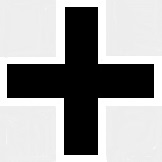Corgi AA38311 German Fokker Dr.1 Triplane Fighter - Werner Steinhauser, Jasta 11, Cappy Aerodrome, France, April 21st, 1918 (1:48 Scale)
"The important thing in aeroplanes is that they shall be speedy."
- Baron Manfred Von Richthofen
 The Fokker Dr.I Dreidecker (triplane) was a World War I fighter aircraft built by the company of Anthony Fokker, and designed by Reinhold Platz. It became most famous as the plane of the Red Baron, Manfred von Richthofen.
The Fokker Dr.I Dreidecker (triplane) was a World War I fighter aircraft built by the company of Anthony Fokker, and designed by Reinhold Platz. It became most famous as the plane of the Red Baron, Manfred von Richthofen.
In April 1917, the Royal Naval Air Service (RNAS) introduced the Sopwith Triplane. Their debut was sensational and they swiftly proved to be superior to the Albatros and Halberstadt scouts then in use by the German Air Service. Soon the German pilots were clamouring for a triplane of their own. The majority of the German aircraft manufacturers, including Pfalz, AEG, DFW, Schutte-Lanz, and Euler, responded with new triplane designs. Most displayed little promise, though limited production of the Pfalz Dr. I was undertaken.
Fokker responded with the V.3, a small rotary-powered triplane with a tubular steel frame fuselage and thick cantilever wings. Fokker found several deficiencies in the V.3, particularly regarding control forces. Instead of submitting the V.3 for a type test, Fokker produced a revised prototype designated V.4. The most notable changes were horn-balanced ailerons and elevators, as well as wings of increased span. The V.4 also featured interplane struts, which were not necessary from a structural standpoint, but which had the effect of minimizing wing flexing. The V.4 proved highly manueverable and much superior to the triplane prototypes submitted by other manufacturers. The rudder and elevator controls were powerful and light. Rapid turns were facilitated by the triplane's directional instability. The ailerons were also light, but not very effective.
After a type test, an immediate production order ensued. The V.4 prototype was intentionally destroyed in static structural tests. The two pre-production examples, designated F.I, were delivered in the middle of August 1917. These were the only machines to receive the F.I designation. Delivery of production machines, designated Dr.I, commenced in October of that year.
Pictured here is a 1:48 scale replica of a German Fokker Dr.1 triplane fighter that was piloted by Werner Steinhauser, who was attached to Jasta 11 on April 21st, 1918. Sold Out!
Dimensions:
Length: 6-inches
Wingspan: 7-1/2-inches
Release Date: June 2022
Historical Account: "Six Took Off" - The last combat sortie of the Red Baron flying one of the six Jasta 11 Fokker Dr.1 fighters which climbed away from Cappy Aerodrome in the mid-morning of Sunday, April 21st, 1918, Werner Steinhauser was beginning to develop into an extremely gifted aviator under the guidance of his inspirational Commanding Officer, Manfred von Richthofen. When he initially joined the unit in early 1918, he only had a solitary observation balloon victory to his name, but now that he found himself in the company of some of the Luftstreitkrafte's most gifted fighter pilots, he began to show real skill and poise during combat situations and as a consequence, his victory tally was increasing.
Flying alongside von Richthofen in his own distinctively marked personal Fokker Dr.1 fighter on the morning of the April 21st, Steinhauser would be involved in the intense fighting with the Sopwith Camels of RAF No.209 Squadron which ultimately resulted in the death of his mentor. The famed 'Flying Circus' never really recovered from the loss of von Richthofen and from this date, an ever increasing number of Allied fighters in the air at any one time would result in the loss of the majority of their most successful pilots. Going on to score a further six aerial victories after this fateful day, Werner Steinhauser would himself be shot down and killed near Neuilly on June 26th, just three days before he would have celebrated his 22nd birthday.


